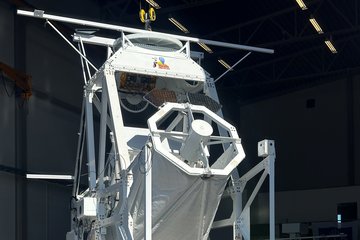All genres
1.
Journal Article
Deciphering the Slow-rise Precursor of a Major Coronal Mass Ejection. The Astrophysical Journal 954, p. L47 (2023)
2.
Journal Article
Fine Structures of Radio Bursts from Flare Star AD Leo with FAST Observations. The Astrophysical Journal 953, p. 65 (2023)
3.
Journal Article
Current-sheet Oscillations Caused by the Kelvin-Helmholtz Instability at the Loop Top of Solar Flares. Astrophysical Journal Letters 931 (2) (2022)
4.
Journal Article
Microwave imaging of quasi-periodic pulsations at flare current sheet. Nature Communications 13, p. 7680 (2022)
5.
Journal Article
Three-dimensional Magnetic and Thermodynamic Structures of Solar Microflares. The Astrophysical Journal 930, p. L7 (2022)
6.
Journal Article
From Formation to Disruption: Observing the Multiphase Evolution of a Solar Flare Current Sheet. The Astrophysical Journal 911 (2), 133 (2021)
7.
Journal Article
Thermodynamic Evolution of Solar Flare Supra-arcade Downflows. The Astrophysical Journal 915 (2), 124 (2021)
8.
Journal Article
The kinematic evolution of erupting structures in confined solar flares. The Astrophysical Journal Letters 904 (1), L2 (2020)
9.
Journal Article
What Determines Solar Flares Producing Interplanetary Type III Radio Bursts? The Astrophysical Journal Letters 898 (1), L24 (2020)
10.
Journal Article
When do solar erupting hot magnetic flux ropes form? Astronomy and Astrophysics 642, A109 (2020)










